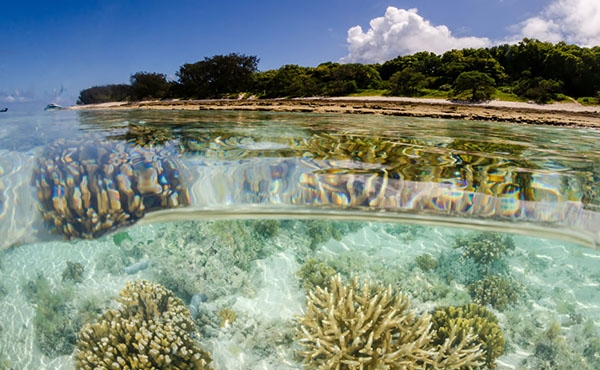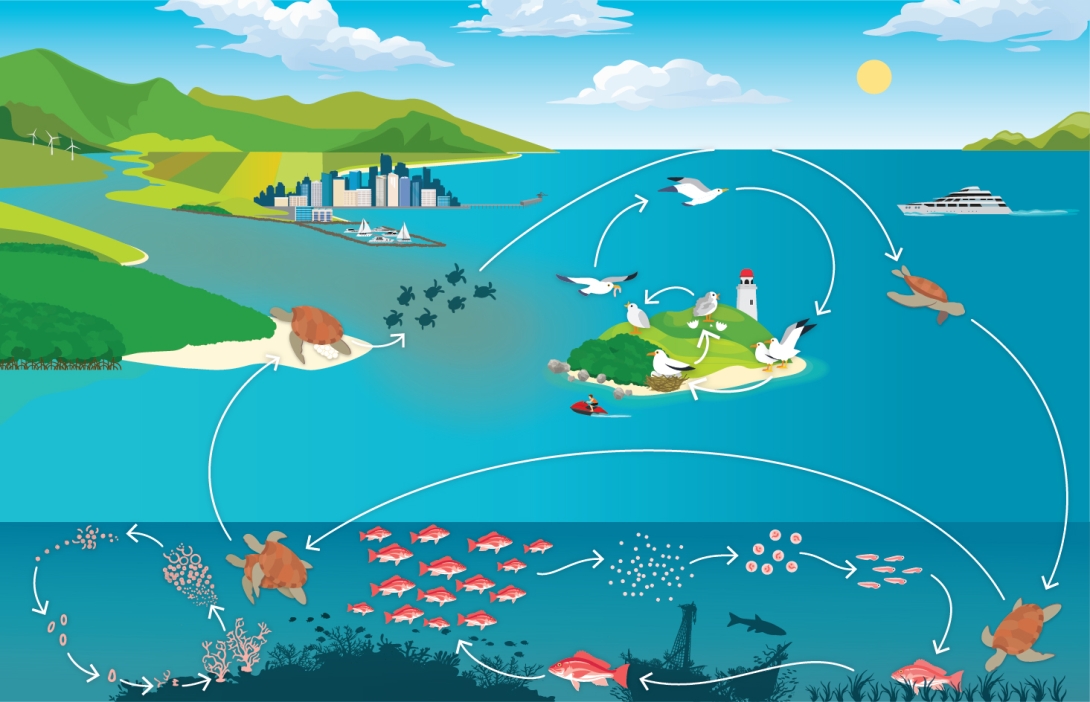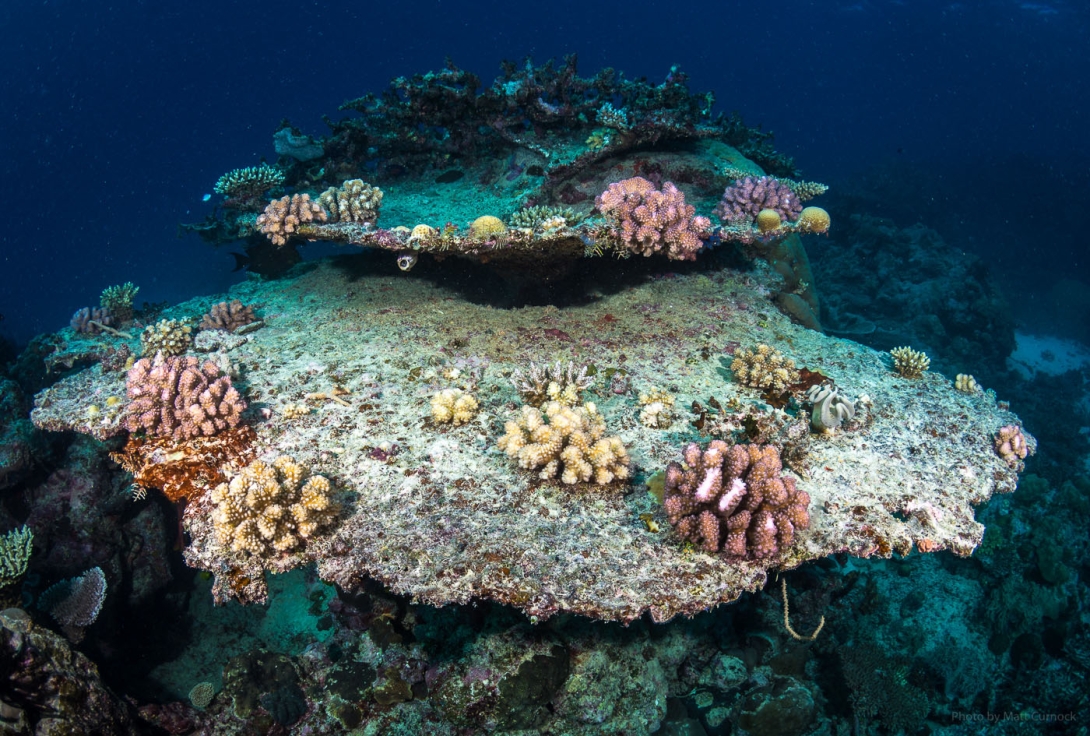145.
McKenzie, L.J., Collier, C.J., Langlois, L.A. and Yoshida, R.L. 2023, Marine Monitoring Program: annual report for inshore seagrass monitoring 2021–22. Report for the Great Barrier Reef Marine Park Authority, Great Barrier Reef Marine Park Authority, Townsville.
161.
Australian Institute of Marine Science 2023, Long-Term Monitoring Program Annual Summary Report of Coral Reef Condition 2022/23, Townsville.
-
183.
Chandler, J.F., Burn, D., Caballes, C.F., Doll, P.C., Kwong, S.L.T., et al. 2023, Increasing densities of Pacific crown-of-thorns starfish (Acanthaster cf. solaris) at Lizard Island, northern Great Barrier Reef, resolved using a novel survey method, Scientific Reports 13(1): 19306.
185.
Thompson, A., Davidson, J., Logan, M. and Thompson, C. 2023, Marine Monitoring Program Annual Report for Inshore Coral Reef Monitoring: 2021–22. Report for the Great Barrier Reef Marine Park Authority, Townsville.
190.
Thompson, A., Davidson, J., Logan, M. and Thompson, C. 2024, Marine Monitoring Program: Annual report for inshore coral reef monitoring 2022–23. Report for the Great Barrier Reef Marine Park Authority, Townsville.
-
280.
Whitman, T.N., Negri, A.P., Bourne, D.G. and Randall, C.J. 2020, Settlement of larvae from four families of corals in response to a crustose coralline alga and its biochemical morphogens, Scientific Reports 10(1): 16397.
365.
Stuart-Smith, R.D., Mellin, C., Bates, A.E. and Edgar, G.J. 2021, Habitat loss and range shifts contribute to ecological generalization among reef fishes, Nature Ecology & Evolution 5(5): 656-662.
370.
Wismer, S., Tebbett, S.B., Streit, R.P. and Bellwood, D.R. 2019, Young fishes persist despite coral loss on the Great Barrier Reef, Communications Biology 2(456): 1-7.
410.
Reis, M. and Figueira, W.F. 2023, Assessing the relative vulnerability of chondrichthyan species as bycatch using spatially reported catch data series, Diversity 15: 752.
411.
Jorgensen, S.J., Micheli, F., White, T.D., Van Houtan, K.S., Alfaro-Shigueto, J., et al. 2022, Emergent research and priorities for shark and ray conservation, Endangered Species Research 47: 171-203.
443.
Department of Environment and Science 2021, Queensland Marine Turtle Conservation Strategy (2021-2031), Queensland Government, Brisbane.
446.
Booth, D.T., Dunstan, A., Bell, I., Reina, R. and Tedeschi, J. 2020, Low male production at the world’s largest green turtle rookery, Marine Ecology Progress Series 653: 181-190.
462.
Bell, I.P., Meager, J.J., Eguchi, T., Dobbs, K.A., Miller, J.D., et al. 2020, Twenty-eight years of decline: nesting population demographics and trajectory of the north-east Queensland endangered hawksbill turtle (Eretmochelys imbricata), Biological Conservation 241: 108376.
470.
Limpus, C.J., Anderson, D., Debets, K., Ferguson, J., Fien, L., et al. 2022, Queensland turtle conservation project: data report for marine turtle breeding on the Woongarra coast, 2021-2022 breeding season, Department of Environment and Science, Queensland Government, Brisbane.
473.
Limpus, C.J., Chaloupka, M., Ferguson, J., FitzSimmons, N.N. and Parmenter, C.J. 2020, The Flatback turtle, Natator depressus, in Queensland: population size and trends, Department of Environment and Science, Brisbane.
486.
Woodworth, B.K., Fuller, R.A., Hemson, G., McDougall, A., Congdon, B.C., et al. 2021, Trends in seabird breeding populations across the Great Barrier Reef, Conservation Biology 35: 846-858.
504.
Noad, M.J., Kniest, E. and Dunlop, R.A. 2019, Boom to bust? Implications for the continued rapid growth of the eastern Australian humpback whale population despite recovery, Population Ecology 61(2): 198-209.
522.
Cleguer, C., Hamel, M., Rankin, R., Genson, A., Edwards, C., et al. 2023, 2022 Dugong aerial survey: Mission Beach to Moreton Bay, Publication 23/44, JCU Centre for Tropical Water & Aquatic Ecosystem Research, Townsville.
869.
Roughgarden, J., Gaines, S. and Possingham, H. 1988, Recruitment dynamics in complex life cycles, Science 241(4872): 1460-1466.
870.
Caley, M.J., Carr, M.H., Hixon, M.A., Hughes, T.P., Jones, G.P., et al. 1996, Recruitment and the local dynamics of open marine populations, Annual Review of Ecology and Systematics 27(1): 477-500.
871.
Edmunds, P.J. 2023, Coral recruitment: patterns and processes determining the dynamics of coral populations, Biological Reviews.
872.
Doll, P.C., Uthicke, S., Caballes, C.F., Diaz-Pulido, G., Abdul Wahab, M.A., et al. 2023, Settlement cue selectivity by larvae of the destructive crown-of-thorns starfish, Biology Letters 19(1): 20220399.
873.
Davidson, J., Thompson, A., Logan, M. and Schaffelke, B. 2019, High spatio-temporal variability in Acroporidae settlement to inshore reefs of the Great Barrier Reef, PloS One 14(1): e0209771.
874.
Tebbett, S.B., Morais, J. and Bellwood, D.R. 2022, Spatial patchiness in change, recruitment, and recovery on coral reefs at Lizard Island following consecutive bleaching events, Marine Environmental Research 173: 105537.
875.
Roper, C.D., Camp, E.F., Edmondson, J. and Suggett, D.J. 2022, Combined impacts of natural recruitment and active propagation for coral population recovery on the Great Barrier Reef, Marine Ecological Progress Series 700: 95-109.
876.
Hughes, T.P., Kerry, J.T., Baird, A.H., Connolly, S.R., Chase, T.J., et al. 2019, Global warming impairs stock–recruitment dynamics of corals, Nature 568(7752): 387-390.
877.
Caballes, C.F., Byrne, M., Messmer, V. and Pratchett, M.S. 2021, Temporal variability in gametogenesis and spawning patterns of crown-of-thorns starfish within the outbreak initiation zone in the northern Great Barrier Reef, Marine Biology 168(1): 13.
878.
Robinson, J.P.W., Wilson, S.K., Jennings, S. and Graham, N.A.J. 2019, Thermal stress induces persistently altered coral reef fish assemblages, Global Change Biology 25(8): 2739-2750.
879.
Blandford, M.I., Hillcoat, K.B., Pratchett, M.S. and Hoey, A.S. 2023, Effects of habitat fragmentation on the recruitment and early post-settlement survival of coral reef fishes, Marine Environmental Research 183: 105798.
880.
Booth, D.J., Beretta, G.A. 2021, Long-term demographics of a coral-reef fish: growth, survival and abundance at several spatial scales, Coral Reefs 40(4): 1257-1266.
881.
Braley, R.D. 2023, A population study of giant clams (Tridacninae) on the Great Barrier Reef over three-decades, Molluscan Research 43(2): 77-95.
882.
Sherman, C.C.D., Smith, T.M., York, P.H., Jarvis, J.C., Ruiz-Montoya, L. and Kendrick, G.A. 2018, Reproductive, dispersal and recruitment strategies in Australian seagrasses, in Seagrasses of Australia: Structure, Ecology and Conservation, eds A.W.D. Larkum, G.A. Kendrick and P.J. Ralph, Springer, Switzerland, pp. 213-256.
883.
Loffler, Z. 2019, The persistence of Sargassum communities on coral reefs: resilience and herbivory, PhD thesis, James Cook University.




